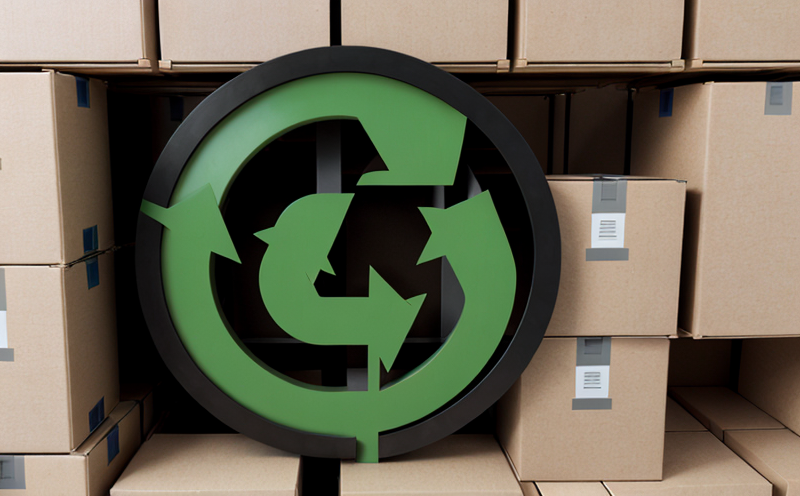ISO 14064 Greenhouse Gas Emissions Verification for Waste Facilities
The verification of greenhouse gas (GHG) emissions in waste facilities is a critical component of sustainability and compliance within the waste management sector. The International Organization for Standardization (ISO) has developed ISO 14064-3, which provides specific guidance on quantifying, monitoring, and reporting GHG emissions from activities related to waste management.
Our laboratory specializes in providing comprehensive verification services that adhere strictly to ISO 14064 standards. This service ensures that your facility meets regulatory requirements while also contributing positively to environmental sustainability goals. By measuring and verifying emissions, you can identify areas for improvement, optimize processes, and demonstrate your commitment to a circular economy.
The process involves several key steps: initial assessment of the waste management system, establishing baselines, selecting appropriate methodologies, conducting regular verifications, and reporting results. Our team works closely with clients throughout this process to ensure accuracy and reliability in all measurements.
For waste facilities, the primary focus is on identifying sources of GHG emissions such as landfill gases (methane), incineration processes, composting operations, and other related activities. Proper verification helps facilities comply with national regulations like the EU Landfill Directive or local municipal guidelines.
To achieve optimal results, it's essential to follow best practices recommended by ISO 14064-3. These include:
- Accurate measurement of emission sources
- Use of appropriate calculation methodologies
- Regular monitoring and auditing
- Documentation and reporting
Our team ensures that every step is meticulously followed, providing you with robust data that supports decision-making processes aimed at reducing environmental impacts.
The importance of this service cannot be overstated. As the world increasingly focuses on climate change mitigation strategies, accurate GHG emissions verification becomes a cornerstone for sustainable practices in waste management.
| Step | Description |
|---|---|
| Initial Assessment | Evaluation of current operations to determine potential emission sources. |
| Baseline Establishment | Determining baseline emissions to measure progress over time. |
| Methodology Selection | Picking the most suitable calculation methods for your specific facility. |
| Verification & Reporting | Ongoing monitoring and periodic reporting of emission levels. |
| Emission Sources | Description |
|---|---|
| Landfill Gas Emissions | Methane released from decomposing organic waste in landfills. |
| Incineration Processes | Emissions from burning waste materials for energy recovery. |
| Composting Operations | Natural decomposition processes generating CO2 and other greenhouse gases. |
| Other Activities | Variety of less common but still significant sources depending on facility type. |
By leveraging these verification services, waste management facilities can better understand their environmental footprint and take proactive steps towards reduction. This not only aids in regulatory compliance but also enhances the overall efficiency and effectiveness of operations.
Benefits
Implementing ISO 14064-3 GHG verification for waste facilities brings numerous advantages:
- Enhanced Compliance: Ensures adherence to international standards and local regulations.
- Informed Decision-Making: Provides actionable insights into emission sources and mitigation strategies.
- Improved Efficiency: Identifies areas where operational changes can lead to reduced emissions.
- Better Reputation: Demonstrates a commitment to environmental responsibility, attracting more customers and investors.
- Competitive Advantage: Differentiates your facility from competitors by showcasing leadership in sustainability.
In summary, this service equips waste facilities with the tools necessary to navigate complex regulatory landscapes while fostering a culture of continuous improvement focused on reducing GHG emissions.
Industry Applications
The application of ISO 14064-3 standards is widespread across various segments within waste management:
- Landfills
- Incineration Plants
- Recycling Facilities
- Composting Operations
- Hazardous Waste Treatment Centers
| Application | Description |
|---|---|
| Landfills | Emission verification helps manage methane levels and prevent leaks. |
| Incineration Plants | Ensures compliance with emission limits set by authorities. |
| Recycling Facilities | Reduces emissions associated with material processing and transportation. |
| Composting Operations | Maintains optimal conditions for natural decomposition, minimizing CO2 release. |
| Hazardous Waste Treatment Centers | Monitors emissions from treatment processes to ensure safety and efficiency. |
Across all these applications, the goal is consistent: to accurately measure GHG emissions, identify opportunities for improvement, and contribute positively to global climate change mitigation efforts.
Environmental and Sustainability Contributions
The verification of greenhouse gas emissions in waste facilities plays a crucial role in promoting environmental sustainability:
Firstly, it allows for the quantification of emissions from various sources within a facility. This data can then be used to set realistic reduction targets based on actual emission levels rather than hypothetical scenarios.
Secondly, by identifying and addressing high-emission activities, facilities can significantly reduce their carbon footprint. For instance, optimizing waste sorting processes or improving energy efficiency in incineration plants can lead to substantial reductions in emissions.
Thirdly, transparent reporting of verified emissions fosters trust among stakeholders, including regulators, investors, and the general public. This transparency is vital for maintaining credibility and ensuring that efforts towards sustainability are genuinely effective.
Finally, compliance with ISO 14064-3 not only meets legal requirements but also demonstrates a proactive approach to environmental stewardship. It shows leadership in adopting best practices recommended by leading international standards bodies like ISO and the United Nations Framework Convention on Climate Change (UNFCCC).





